From the Chicago Reader (May 31, 2002). I’m pleased to remember that Studs Terkel, who knew Nick Ray, wrote me a friendly letter about this review shortly after it appeared — and that, years earlier (1995), when my first collection, Placing Movies, came out, he invited me to appear as a guest on his radio show. — J.R.
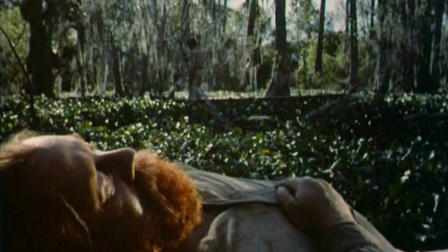
A kind of litmus test for auteurists, this philosophical adventure story set in turn-of-the-century Florida (1958, 93 min.) was Nicholas Ray’s penultimate Hollywood assignment, though he was fired before the end of shooting and barred from the final editing by screenwriter Budd Schulberg (On the Waterfront, A Face in the Crowd), who produced the film with his brother Stuart. (In his introduction to the published screenplay, Schulberg doesn’t even mention Ray.) An ecological parable, it pits an earnest schoolteacher turned game warden (Christopher Plummer) against a savage poacher of wild birds (Burl Ives) heading a grungy gang in the swamps. Ray’s masterful use of color and mystical sense of equality between the antagonists (also evident in Rebel Without a Cause and Bitter Victory) are made all the more piquant here by his feeling for folklore and outlaw ethics as well as his cadenced mise en scene. Read more
From the Chicago Reader (November 21, 2003). — J.R.
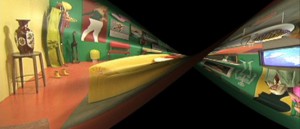
This stunning 93-minute video (2002) by Canadian conceptual artist Michael Snow might be his greatest work since La region centrale over 30 years ago. Almost certainly his most accessible feature, it combines elements from virtually all his previous films: the inexorable camera movement of Wavelength, Back and Forth, and La region centrale; the encyclopedic cataloging of Rameau’s Nephew; the playful self-reflexivity of So Is This. This is also his first encounter with digital video, and it explores all the things DV can do to stretch, compress, and distort bodies, a subject Snow explores formally, comically, and at times even ideologically. (There’s a lot of dialectical play in the film between two distinct spaces: a very contemporary row of staffed computer stations, backed by windows overlooking a cityscape, and a completely sealed-off bomb shelter of a living room filled with 50s kitsch and inhabited by an all-American family, in which a TV set clearly “rhymes” with the computer screens.) Not counting the asterisk, the title refers to the tissue connecting the hemispheres of the brain, an apt reference given the prodigious and joyful inventiveness on display. Univ. of Chicago Doc Films. Read more
From the Chicago Reader (May 18, 1990). — J.R.

MR. HOOVER AND I
**** (Masterpiece)
Directed and written by Emile de Antonio.

1. “Born Pennsylvania U.S.A., in intellectual surroundings and coal mines. Went to Harvard. Became, and still is, a Marxist, without party or leader. Started making films at age of 40 after having avoided films most of his life. Favorite film is L’age d’or.” Emile de Antonio’s self-description was written around 1977 for a poll organized by the Royal Film Archive of Belgium and eventually published in book form as The Most Important and Misappreciated American Films. Under the category of most important American films, de Antonio listed, in order, The Birth of a Nation, It’s a Gift, A Night at the Opera, The Cure, The Immigrant, One A.M., The Kid, Big Business, The Navigator, and Foolish Wives, and added the following comment:
“Most American films were and are like Fords. They are made on assembly lines. John Ford is not an artist any more than Jerry Ford is a statesman. Harry Cohn said it all and the Capras jumped.
“Comedy was spared all that. Irreverence was possible because the booboisie didn’t know it was being laughed at. Read more
Prior to the more recently held retrospectives in the U.S. devoted to Jean-Marie Straub and the late Danièle Huillet, the only previous such retrospective was held on November 2-14, 1982, at New York’s Public Theater. I curated this event, which also included a selection of films by others made by Jean-Marie and Danièle to show with their own. For the occasion, I also edited a 20-page, tabloid-sized catalogue, long out of print, and what follows are (1) the full program as planned and (2) my introduction. Regarding (1), I recall now that there was one last-minute addition, their recently completed short film En rachâchant (see second photograph below), as well as some last-minute omissions or substitutions that are noted in the text below. Regarding (2), I should emphasize that a lot has changed and developed over the past three decades, both in myself and in Straub-Huillet’s work –- in both cases, I’d like to think, for the better. It’s cheering to note that no less than three very substantial books have appeared devoted to their work, two in English — their Writings (as translated and edited by Sally Shafto, published in New York by Sequence Press), and an excellent critical collection edited by Ted Fendt for the Austrian Filmmuseum — and a mammoth collection in French, Internationale Straubienne, published jointly by Editions de l’Oeil and the Centre Pompidou (to accompany their own retrospective). Read more
From the Chicago Reader (January 3, 2003). I was very touched when, over a dozen years later, in Lisbon, Nicoletta Braschi (who was performing Samuel Beckett’s Happy Days there), Begnini’s partner, thanked me for this piece. — J.R.
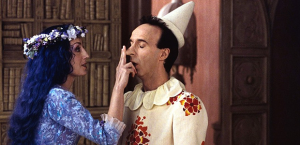
The worst movie I saw all year was the dubbed and recut version of Roberto Benigni’s Pinocchio, hastily released by Miramax on Christmas Day. Yet I could easily have placed Benigni’s subtitled original in my top 50, if not top 40.
The late-19th-century source novel, Carlo Collodi’s The Adventures of Pinocchio, is so quintessentially Italian that adaptations lose flavor and meaning if they don’t include that aspect. Walt Disney’s 1940 animated feature also failed to include the original’s sense of poverty, its cosmic vision of brutality, and many other disturbing elements, then heaped on the sentimentality; the studio got away with it because the film at least had a style and an occasionally disturbing vision of its own.
Benigni’s adaptation replicates more of the Disney sentimentality than I would have liked, but it returns to the Italian original, altering it mainly to fit Benigni’s irreverent and very Italian sense of comedy. (Federico Fellini had hoped to adapt the story with Benigni as the lead, and this film reflects some of Fellini’s broadness and comic-strip floridity.) Read more
From the Chicago Reader (December 20, 2002). For the record, I regard Downsizing as Payne’s best film to date, even if it’s less perfectly shaped than Election, but representing as much of a leap from About Schmidt as that film was from Citizen Ruth. — J.R.
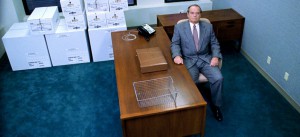
I was so offended by the cynicism and class condescension of Citizen Ruth, Alexander Payne’s first feature, that I’ve remained suspicious of his work even as he’s emerged as a more skillful director in Election and this still more ambitious and accomplished film. It’s a very free adaptation of a Louis Begley novel, transposed from Manhattan to Payne’s native Nebraska, in which Jack Nicholson has been asked to put on some weight and finally act his age. The problem is he’s still Jack Nicholson, exuding his know-it-all charisma even when playing a clueless asshole and not nearly as inventive as he was in a much less showy part in The Pledge. The contrivance here by which he bares his soul — by mouthing letters to an African boy he’s helping to support from afar — is bogus and forced, and even the more observant moments in this odyssey of a bored and boring widower can’t entirely escape the jeering tone that remains Payne’s stock-in-trade. Read more
From the Chicago Reader (January 1, 1998). — J.R.
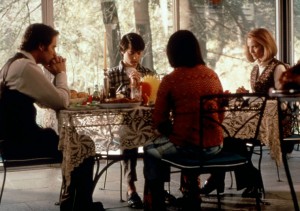
Onetime independent producer James Schamus adapted this 1997 feature from Rick Moody’s novel about sexual confusion and hypocrisy in Connecticut, set during Thanksgiving 1973. Existentially speaking, this is puritanical Hollywood yuppie-think, right down to its inevitable retribution reel. Its characters ride the same commuter trains as Whit Stillman’s, but the higher forces placing them there are less up-front about their neocon refusal to see beyond their own class-bound hides. I can’t deny director Ang Lee’s sensitivity with actors or the fine cast strutting its stuff (including Kevin Kline, Joan Allen, Christina Ricci, and Sigourney Weaver); some of the period details are fun, and Lee offers some nicely observed moments. But the tragic and highly “symbolic” death toward the end, which is supposed to illustrate the sins of the parents being visited upon their children, barely resonates at all, because most of the insights are strictly incidental. The film elicits guilty, lascivious chuckles, not analysis. (JR)
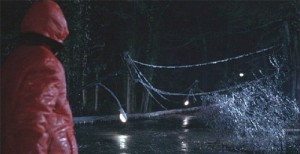 Read more
Read more








